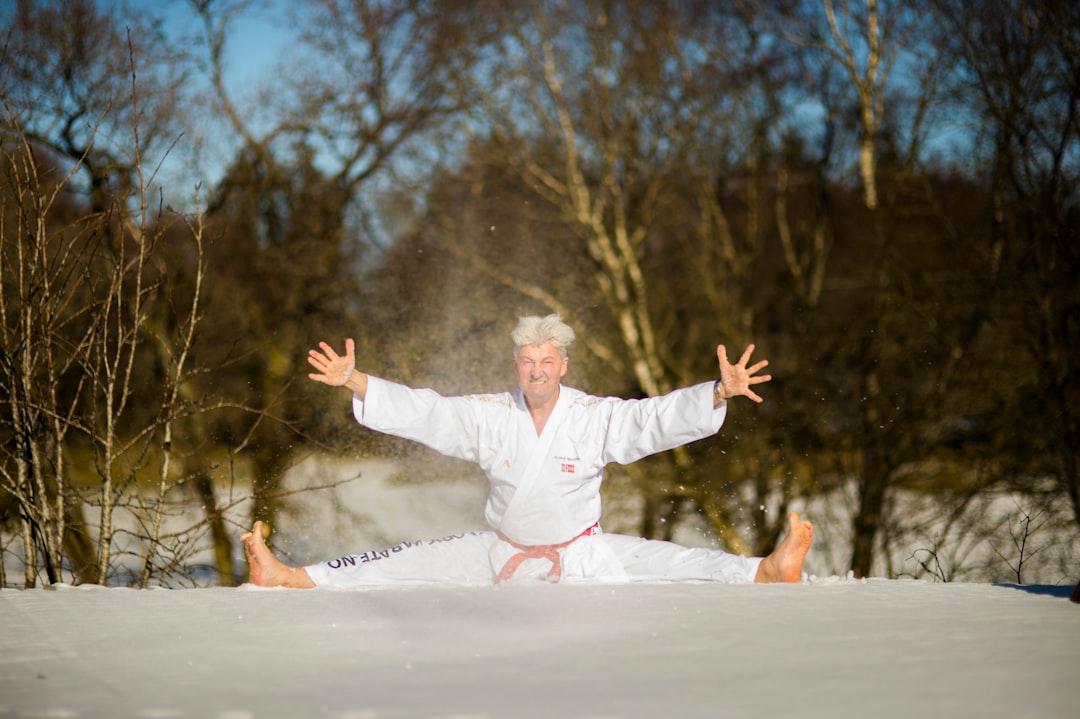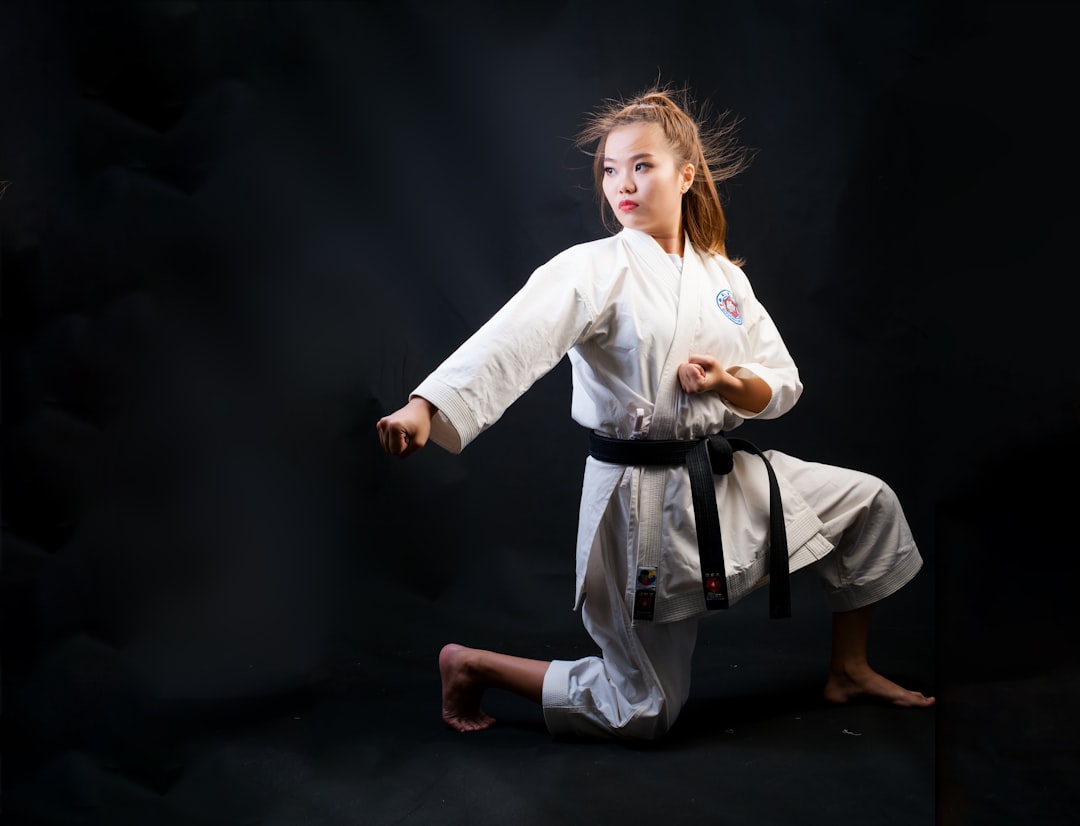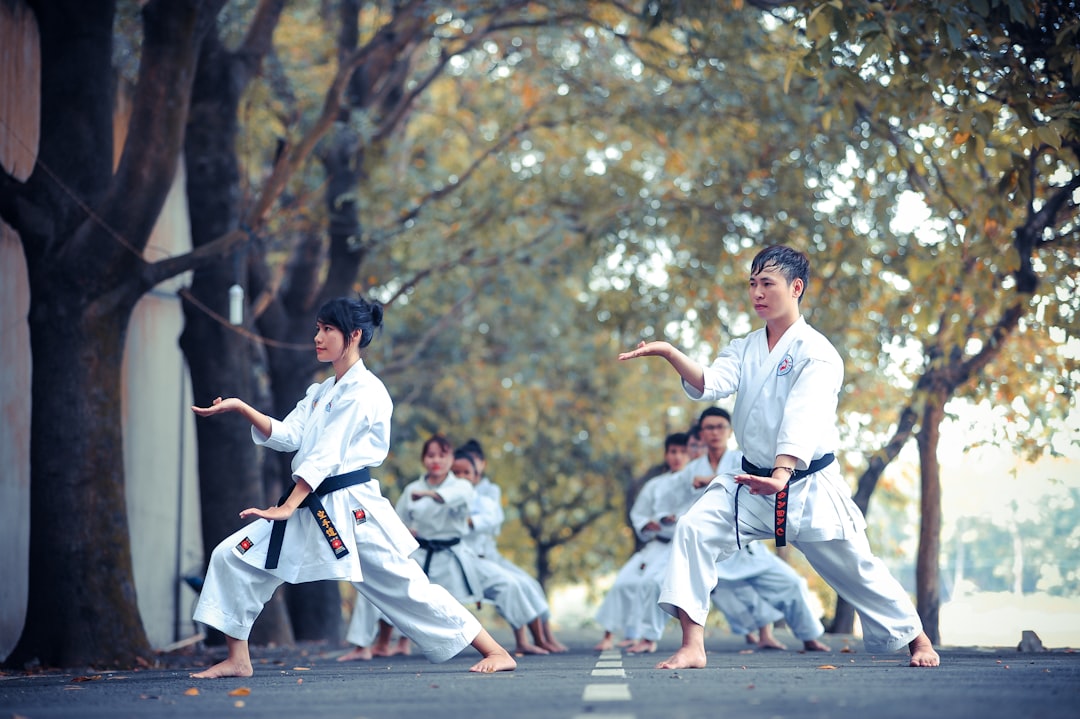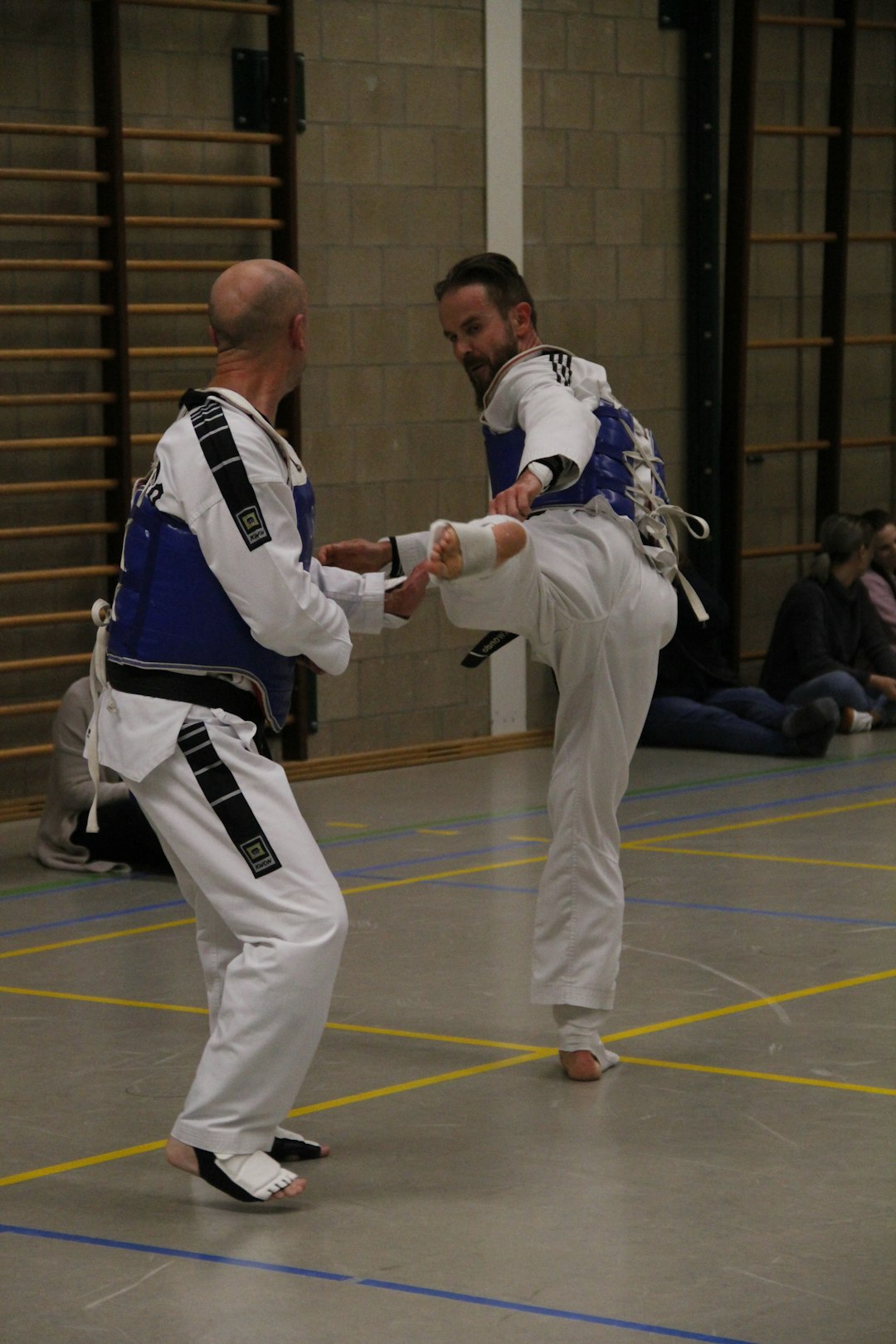When equipping your child for karate sparring, it's crucial to ensure that all protective gear—headgear, chest protector, arm pads, shin guards, and foot protection—fits perfectly for both safety and optimal performance. The headgear must be a snug fit above the eyebrows with a comfortable chin strap, allowing for clear vision and hearing. The chest protector should lie flat on the torso without restricting movement. Arm pads should cover the forearms without impeding arm motion, while shin guards and foot protection must extend from ankle to knee, securing comfortably without causing discomfort or hindering activity. Hand protection in the form of karate gloves should be well-fitted for flexibility and padding, protecting palms and knuckles without affecting dexterity. All protective gear should offer a balance between breathability and durability to ensure safety and comfort during sparring. Properly fitted karate equipment is essential for young athletes' safety, confidence in technique mastery, and overall enjoyment of the sport.
When stepping into the dojo, safety is paramount for young karateka. This article serves as a comprehensive guide to correctly measuring and fitting children’s karate sparring gear, ensuring they’re protected without hindering their practice. We’ll explore essential measurements for kids’ karate sparring equipment, providing a clear step-by-step guide to fitting protective padding and helmets, and delving into the importance of proper hand and foot protection for youth karate sparring. Follow these steps to select the right gear and support your child’s martial arts journey safely.
- Essential Measurements for Children's Karate Sparring Gear
- Step-by-Step Guide to Fitting Kids' Protective Padding and Helmets
- Ensuring Proper Hand and Foot Protection in Youth Karate Sparring
Essential Measurements for Children's Karate Sparring Gear

When outfitting your child for karate sparring, it’s crucial to ensure that their equipment provides both safety and comfort. The right gear is essential for minimizing injury risk and allowing them to move freely during practice or competition. One of the key measurements to consider is the fit of the protective headgear. How snug should the headgear be? It should neither be too tight, restricting your child’s vision or movement, nor too loose, which could cause it to shift during sparring. Additionally, the chest protector is another vital piece of equipment that needs proper measurement. Is the chest protector the appropriate size for your child’s torso? It should fit securely around their midsection without being overly restrictive, allowing for a full range of motion in their upper body and arms.
For accurate sizing, measure your child’s head circumference just above the eyebrows and ears for the headgear, and their chest measurement right under the armpits and across the shoulder blades for the chest protector. These measurements will guide you in selecting equipment that fits perfectly, ensuring your child can focus on perfecting their techniques rather than worrying about their gear. Remember to consult the specific manufacturer’s sizing charts as well, since different brands may have variations in their sizing. With the correct measurements in hand, you can select from the karate equipment used in sparring that is both safe and designed to optimize your child’s performance on the mat.
Step-by-Step Guide to Fitting Kids' Protective Padding and Helmets

When fitting children for karate equipment used in sparring, it’s crucial to ensure that each piece of protective gear provides the necessary safety while allowing for a full range of motion. To begin with, helmets should be snug but not overly tight, with enough space to accommodate head growth. Position the helmet on your child’s head, making sure the front edge is about one to two fingers above the eyebrows. Adjust the chin strap so that it forms a “V” shape under the ears and fasten it securely; you should be able to fit one finger between the strap and your child’s cheek without it slipping off.
Next, when measuring for chest protectors, arm pads, shin guards, and foot protection, consider the fit as well as the comfort of movement. The chest protector should lie flat against the torso without restricting the arms. It’s important that the arm pads are not so long that they impede motion but cover the entire forearm, from the wrist to just below the elbow. Shin guards and foot protection should fit securely without being too tight, extending from just above the ankle to just below the knee for optimal coverage and support during sparring. Ensure that there is no excessive gap at the top or bottom of these pads, as this can lead to injury. Does the helmet sit comfortably on their head without obstructing vision or hearing? Is the chin strap fastened correctly, ensuring the helmet remains secure during practice? For the protective padding, are the arm holes accommodating your child’s arms with ease, and do the shin guards and foot protection cover the intended areas without restricting movement? If the answers to these questions are affirmative, then you have successfully fitted your child for their karate sparring equipment.
Ensuring Proper Hand and Foot Protection in Youth Karate Sparring

When it comes to youth karate sparring, ensuring proper hand and foot protection is paramount for the safety and well-being of young athletes. The right equipment not only guards against injuries but also fosters confidence as they learn and perfect their techniques. For hand protection, karate gloves designed specifically for children should be used; these are tailored to fit smaller hands comfortably without hindering dexterity. How do you know if the gloves fit correctly? They should be snug yet allow enough room for the fingers to bend freely without pinching or constricting. Additionally, the padding on the palm and knuckles areas must be adequate to absorb impact during sparring.
Similarly, when it comes to foot protection, karate instep protectors or shin guards are essential. These should fit securely to support the foot and ankle, providing stability and preventing injuries to the shins and insteps. Do the foot protectors stay in place during active movement? They should be worn slightly above the ankles, ensuring they don’t slip off or ride down during sparring. The material should also be of high quality, offering both breathability and durability throughout intense training sessions. By selecting equipment that meets these criteria, you can help children engage in karate sparring with the utmost safety and enjoyment.
When outfitting your child for safe and effective karate sparring, it’s crucial to focus on precise measurements and quality gear. This article has outlined the key steps in selecting appropriate karate equipment used specifically for young sparring enthusiasts, from head to toe. By adhering to the guidelines provided in “Essential Measurements for Children’s Karate Sparring Gear,” parents and guardians can ensure their kids are well-protected during practice and competition. The step-by-step instructions on fitting children’s protective padding and helmets, as detailed in “A Step-by-Step Guide to Fitting Kids’ Protective Padding and Helmets,” further emphasize the importance of a secure fit for optimal safety. Additionally, the discussion on hand and foot protection, covered in “Ensuring Proper Hand and Foot Protection in Youth Karate Sparring,” ensures that your child’s extremities are adequately shielded against impact. Equipping your child with the right karate equipment used for sparring is not just about safety; it’s about empowering them to train with confidence and enjoy their martial arts journey without unnecessary risk.
